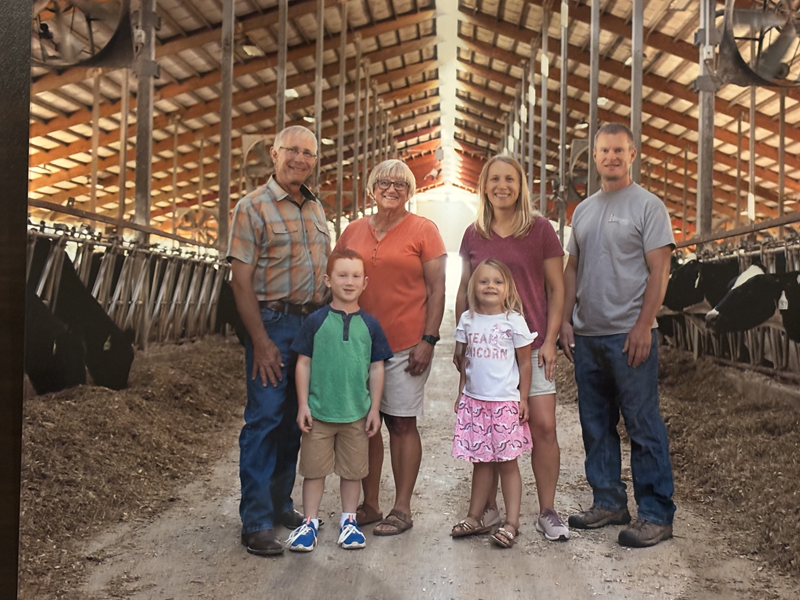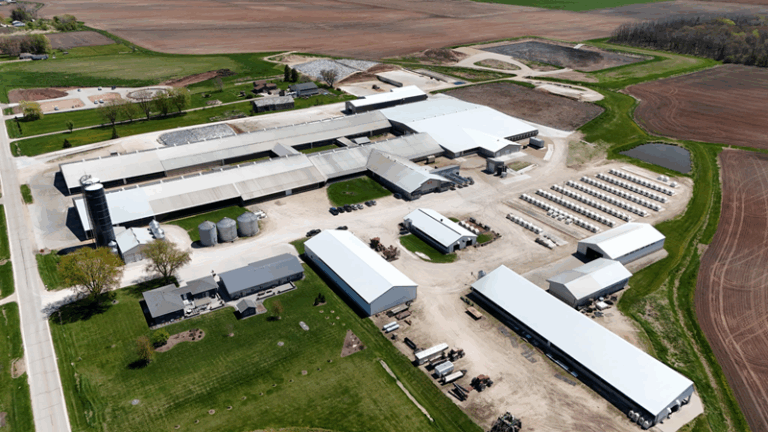Carbon, Crops & Cows: A Conversation with John Ruedinger
Carbon and emissions are becoming bigger topics of conversation in the dairy world as producers look for ways to make their operations more sustainable. At the PDPW Carbon Conference, “Carbon, Crops & Cows,” those conversations came to life. One of the hosts, dairy producer John Ruedinger, not only helped lead the day’s discussions but also opened up his farm for a tour, showing firsthand how he’s putting sustainability into action. We caught up with John to hear his perspective on the event and what carbon management really looks like in practice.
Q: From your perspective, what was the main goal or message you wanted this event to deliver to dairy producers?
JR: The main goal was to raise awareness that there are programs available to help producers identify areas where they can become more sustainable and set realistic goals for their farms. Every operation is different—soil types, geography, herd size—so sustainability can’t look the same for everyone.
We wanted producers to walk away understanding what sustainability means for their specific farm, how to set achievable goals for the future, and that it’s okay to start with what fits your land, herd, and financial situation.
Q: When you look at discussions around carbon, sustainability, and dairy’s future—what gap did you see that this event was meant to fill?
JR: A lot of conversations about carbon and sustainability stay high-level. This event was meant to help producers connect those ideas to real, on-farm practices and see what’s actually possible on their own land.

At Ruedinger Farms, we’ve been working to address soil compaction and improve soil health. Our heavier soils make it tough to establish cover crops every year, so we’ve been experimenting with inline deep tilling—lifting the soil to relieve compaction without turning it over. We’ve also begun strip tilling, applying fertilizer in narrow bands while planting cover crops between the rows.
This approach helps us gradually introduce cover crops into more acres on a rotational basis instead of trying to cover every acre every year. The goal of the conference was to help producers think through these kinds of challenges—identify their own gaps, and leave with ideas that make sense for their operation.
Q: When implementing sustainable practices, how do you ensure the basics—herd health, feed, and cash flow—stay secure?
JR: Sustainability has to make sense financially and practically. Equipment and seed costs add up, so we’ve been smart about it—buying good used equipment, fixing it up, and running partial budgets to see what makes sense.
Some of our key practices include investing in reliable used tools like vertical tillage and inline rippers to manage compaction affordably, budgeting for seed and tillage to find a workable balance, and pulling in-season soil scans before our second nitrogen application to avoid over-fertilizing. We also tailor nutrient applications based on crop type, since corn silage and grain corn have different nitrogen needs.
These adjustments help us manage costs without affecting herd health or feed quality. On the dairy side, we haven’t seen any negative effects—our changes are mainly on the agronomy side.

Q: What do you think are the biggest barriers for other farmers who want to do more but hesitate?
JR: A few things hold farmers back—the upfront cost of equipment, the patience it takes to see results, and the learning curve that comes with understanding the science behind soil health.
For example, we planted soybeans after a heavy biomass cover crop and noticed some nutrient tie-up early in the season. That kind of situation makes you realize how important it is to understand nutrient cycling—how much the decomposing material pulls from the soil and what’s left for the next crop.
More education on these agronomy details would really help producers who want to make changes but don’t have the full picture yet. Our agronomist studies crops the way dairymen study genetics and embryo transfer. Not every producer dives that deep, but understanding that science is the next step in sustainability.
Q: Looking ahead, what do you hope Ruedinger Farms represents for the next generation—both within your family and the industry?
JR: We’re fortunate that our daughter and son-in-law are part of the farm today. Each generation brings new tools and new ideas. My dad and I did things differently when I took over, and now my kids are doing the same—continuing that progress.
Looking ahead, I see opportunities like adding a biodigester to better manage manure nutrients and emissions, increasing our focus on environmental stewardship, and exploring advances in seed selection, agronomy, and animal genetics.
I hope we can blend the agronomy side and livestock genetics side more closely—understanding how feed crops and cattle traits work together. Maybe we’ll see genetic progress toward better feed digestibility or more efficient nutrient use in ruminants.
My hope is that Ruedinger Farms continues to evolve—combining science, sustainability, and good stewardship—to leave the land and herd better for the next generation.
